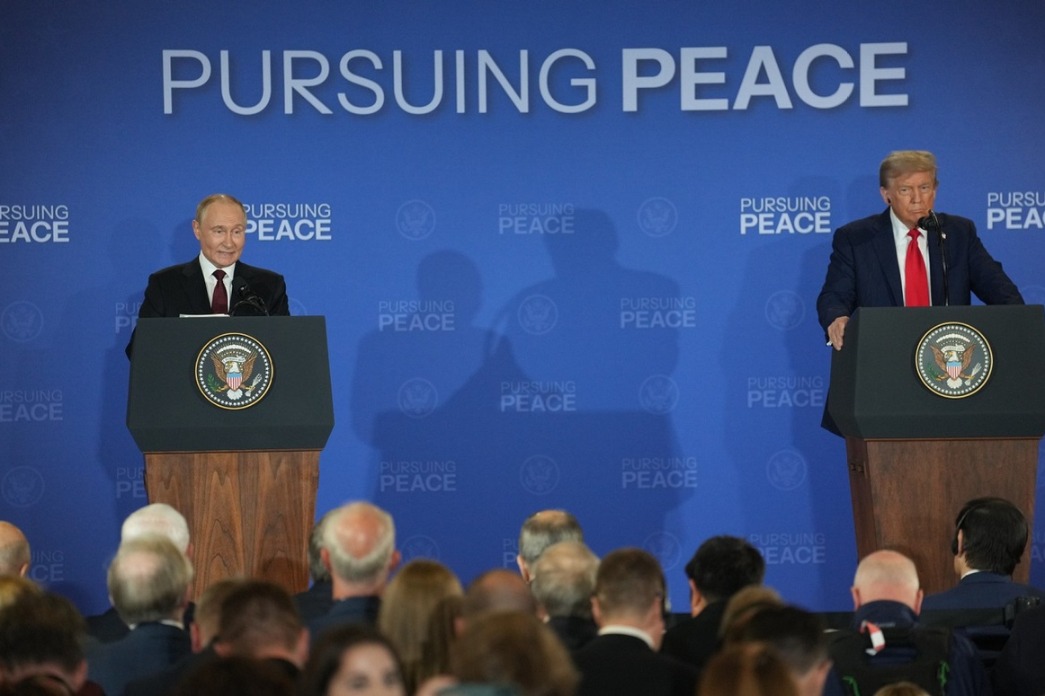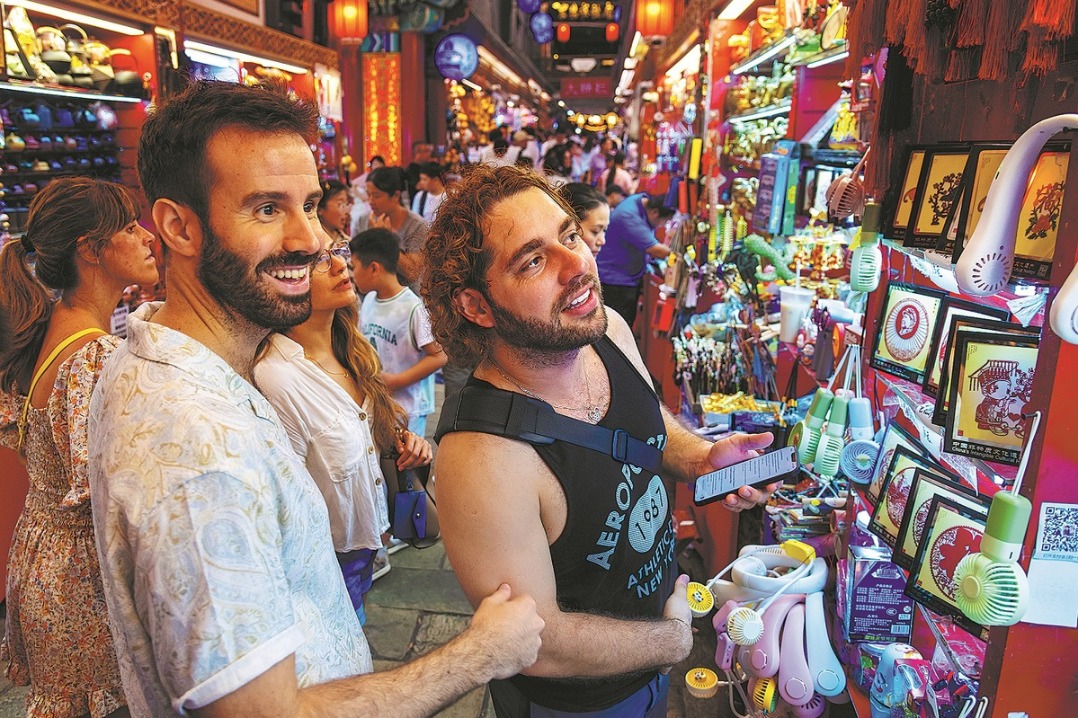Cultural treasure for the world
By Alexis Hooi | China Daily | Updated: 2019-11-12 09:04

Historic Silk Road hub set to continue playing a leading role in global learning and exchange, Alexis Hooi reports.
The mural depicts a robe-clad figure flanked by envoy-like emblems, seemingly prostrate before an august figure on horseback with a royal retinue.
Scholars have since attributed the scene to that of Zhang Qian bidding farewell to the Western Han Dynasty's (206 BC-AD 24) Emperor Wu, who had sent his imperial emissary on a trailblazing diplomatic mission to the western regions.
Zhang's expeditions, as many Chinese people know, paved the way to what later became the Silk Road, the historic trading network linking East and West, with world-binding influences expanding to the cultural, social and other spheres that continue to be felt today.
The Tang Dynasty (618-907) mural itself comes from Cave 323 of the Mogao Caves in Dunhuang, Northwest China's Gansu province, which boasts one of the finest repositories of Buddhist art in the world.
The major paintings, sculptures and writings in about 500 caves of the UNESCO World Heritage Site on the outskirts of the oasis date back to the fourth century, spanning the golden ages of the Tang and other seminal dynasties. The importance of the relics goes beyond their religious significance to encompass Dunhuang's unique position as a cultural hub bringing together the world's great civilizations.
During his inspection tour of the site in August, President Xi Jinping stressed the need to step up support in carrying forward and promoting the culture of Dunhuang to preserve "our quintessence".
Zhao Shengliang, director of the Dunhuang Academy, which manages and studies the caves, says Dunhuang is well-poised to tap the successful preservation and promotion of its cultural treasure trove, to firmly take its place as a hub of international exchange.
"Through the art of Dunhuang, we take on the role of cultural diplomacy. We can allow more people, allow more countries, to understand Dunhuang art," Zhao says.
"Dunhuang is about East-West cultural exchange. When Westerners see Dunhuang art, they may not find it alien or foreign or distant. They can feel the links with the West from the past."
In recent years, exhibitions showcasing Dunhuang's relics to Western audiences such as those in California have been extremely well-received, with more foreign institutions expressing an interest in hosting events and collaborating with the academy, Zhao says.
At another level, the academy is forging ties abroad through academic exchanges and the transfer of its relics conservation expertise to other heritage sites such as Cambodia's Angkor Wat, areas in countries under the China-proposed Belt and Road Initiative global development drive.
The academy's deputy director, Zhang Xiantang, whose work focuses on Buddhist history, says Dunhuang's relics "illuminate the historical and cultural interactions among the world's civilizations. They were created amid some of the most open periods in Chinese history".
Chinese scholars have since branched out to places including India, Uzbekistan and Tajikistan, "going out and opening more doors to cultural interaction, sharing our knowledge that traces back to Dunhuang's place on the Silk Road", Zhang says.
Foreign researchers also continue to be drawn to Dunhuang.
Dr Joshua Hill from the London-based Courtauld Institute of Art's Conservation of Wall Painting Department has spent time this summer at Mogao, working with mural restorers such as Yang Tao to unveil the secrets behind the relics.
Hill, who is trained in chemistry and whose organization researches the history and conservation of art and architecture, says that the opportunity to get up close to the murals-with their traces of gold and other minerals that shed light not only on art production techniques but also the rich cultural practices and traditions of Chinese antiquity-stretches across disciplines and has proved invaluable.
Zhang Yuanlin, chief librarian and director of the center for research on the Silk Road and Dunhuang, highlights how the cave art had very early on reflected a pluralism embodying the cultural elements of India, Central Asia and Western Asia, and even Greece and Rome.
From architectural Doric columns and siren-like Buddhist Kalavinka mythical creatures, to sacred items and writings of the ancient religions of Nestorianism, Manichaeism and Zoroastrianism, the "pluralism and inclusiveness embodied in the art of Dunhuang also resonated among the peoples of different cultural and religious backgrounds" who settled in the area, according to Zhang Yuanlin.
Academy director Zhao says that Dunhuang now needs to fully promote its treasures of the past in the modern age, most notably through a major digitization drive to preserve and archive the murals and relics through imagery.
The academy, via crucial collaborations with foreign art and cultural institutions stretching back two decades, have since digitally recorded the artwork in more than 220 caves, says Wu Jian, director of the academy's cultural relics digitization institute.
The images have been displayed at exhibitions and related events in places as far afield as East China's Zhejiang provincial capital Hangzhou, to the Indonesian island of Bali and Russia's capital Moscow, making lasting impressions on viewers through virtual reality and 3D technology that help complement the experience of visiting the caves, Wu says.
"These major exhibitions, which involve large-scale cave renditions, offer viewers a competitive experience that is very close to the real thing," academy director Zhao says.
"So, for our academy, after going through these generations, our role has not changed, namely to protect, research and expand, and to successfully promote our cultural heritage," he says.
"In ancient times, China had the Silk Road. From the Silk Road, China and the West experienced many cultural exchanges. The exchanges brought about progress. Through this mutual interaction, culture prospered," Zhao says. "Looking back at this, we can really feel and experience the sort of openness and exchange. That's very important."
























